In more than 25 years of living and working on the East Coast, one of the most annoying phrases I hear is “flyover country.” Certain East and West coasters use it to refer to the country they see out the window (if they bother to look) as they fly over at 30,000 feet on their way between important meetings on either side of the country. The term annoys me because, for one, I grew up in flyover country, including small towns in Wisconsin and Minnesota. I’m also more culturally and politically conservative than the coastal elites, so I have an affinity for “Main Street America.” And every time I travel to and through the heartland of America, I meet people and see places that make me even more grateful to be a citizen of this great country.
My most recent experience in flyover country was a long cross-country drive Elizabeth and I took this summer from Northern Virginia through Indiana, Missouri, and Kansas to Colorado and back again. The last time I’d driven that far across the middle of the country was more than 40 years ago, when I drove from Baltimore to Colorado Springs in February 1983 to start my new job as editorial page editor of the daily Gazette Telegraph. Now that we’re both retired, Elizabeth and I had the time to drive there again, this time to visit our son Michael and his family.
Among the highlights of the drive were a few days in St. Louis to see our dear friend Berta. We took Berta and her 94-year-old mother on the special tram to the top of the Gateway Arch for great views of the city and the Mississippi River more than 600 feet below. The visitor center near the arch contains an excellent museum on the city and its role in settling of the West. And down the street I stole away for an hour to take in the Economy Museum at the headquarters of the St. Louis Federal Reserve.
A few miles southwest of the central city is White Haven, a plantation and National Historic Site where Ulysses S Grant and his wife Julia lived with the Dent family in-laws from 1854-59. Grant would argue with his slave-owning father-in-law around the dinner table about abolition and the brewing conflict between north and south. The site contains another fine museum with facts and artifacts about Grant’s life and service to the country as Civil War general and president. The displays deepened the respect I’ve had for Grant ever since reading Ron Chernow’s splendid biography a few years ago. Influenced by Lincoln, Grant not only wanted to see black Americans fully integrated into the life of our nation but his inclusive views also extended to immigrants. I especially liked this quote on display from July 28, 1872, when he was president:
My oft expressed desire is that all citizens, white or black, native or foreign born, may be left free, in all parts of our common country, to vote, speak & act, in obedience to law, without intimidation or ostracism on account of his views, color or nativity.
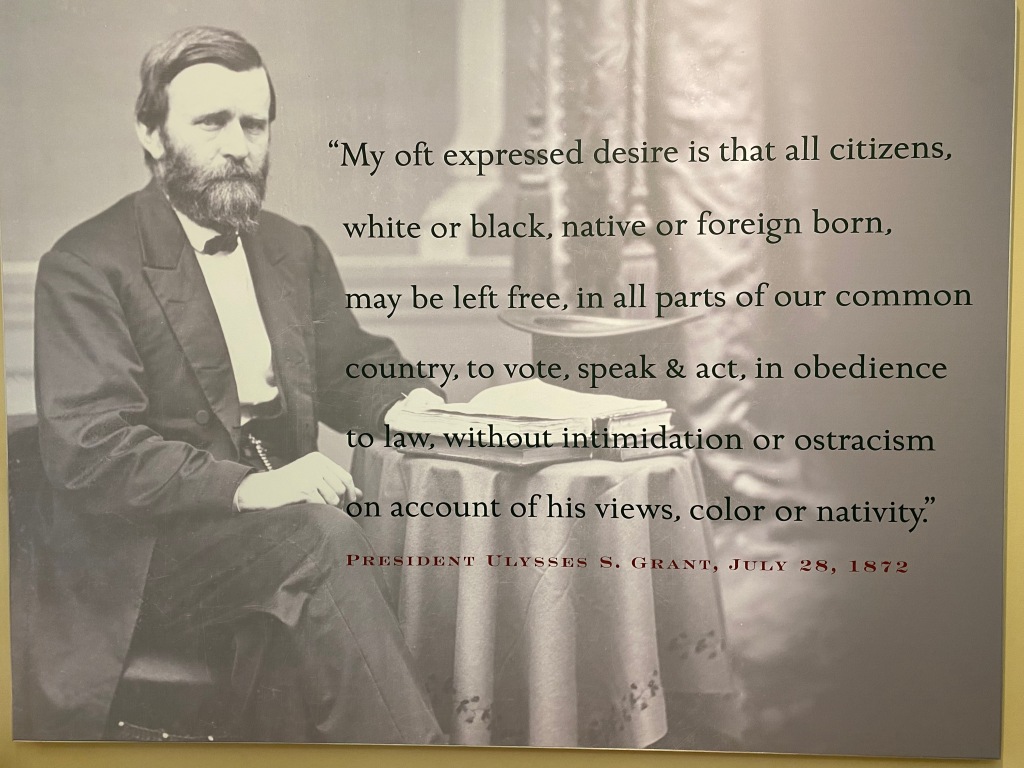
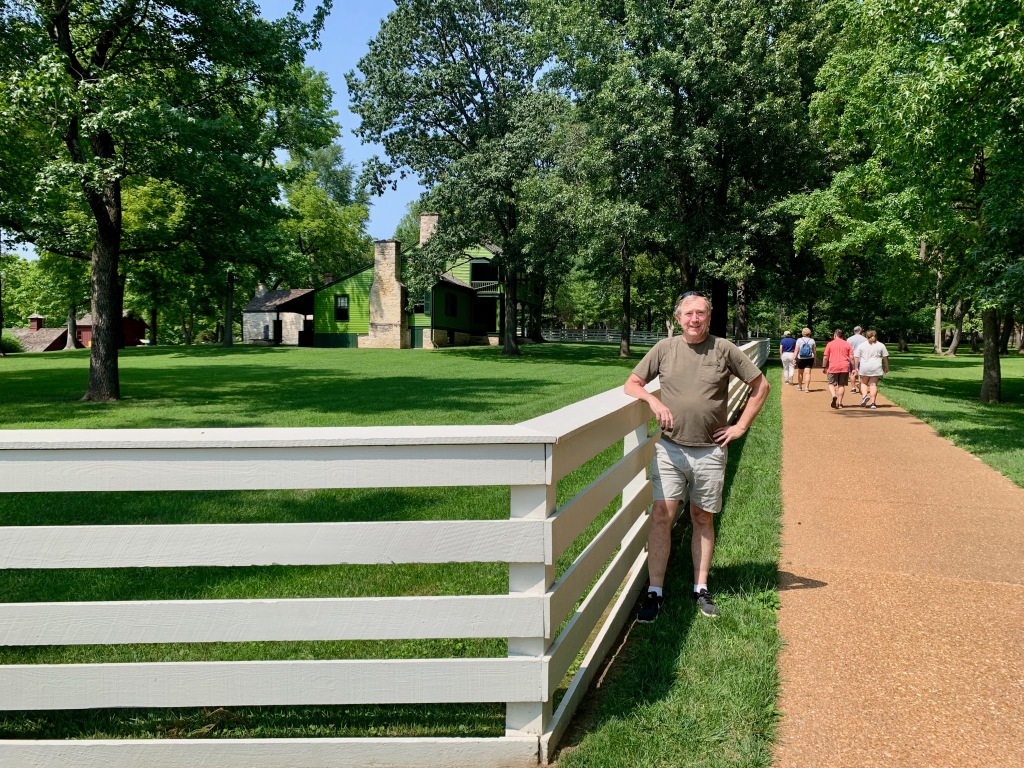

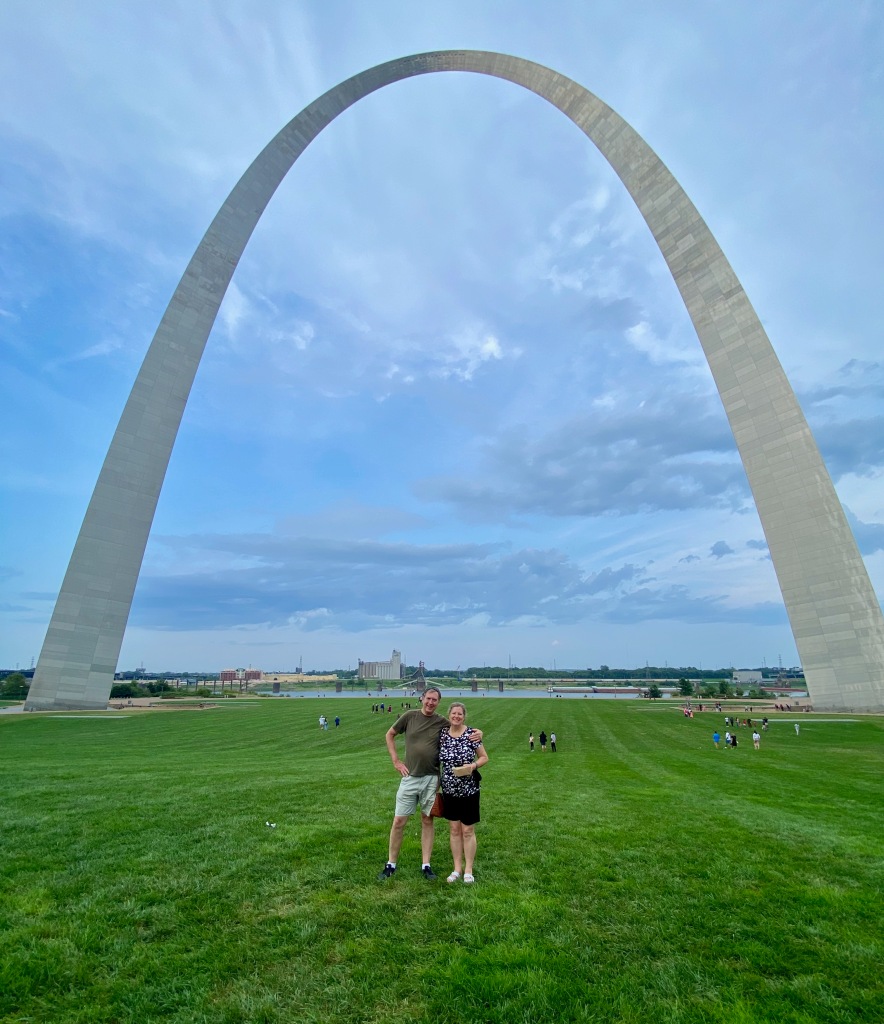
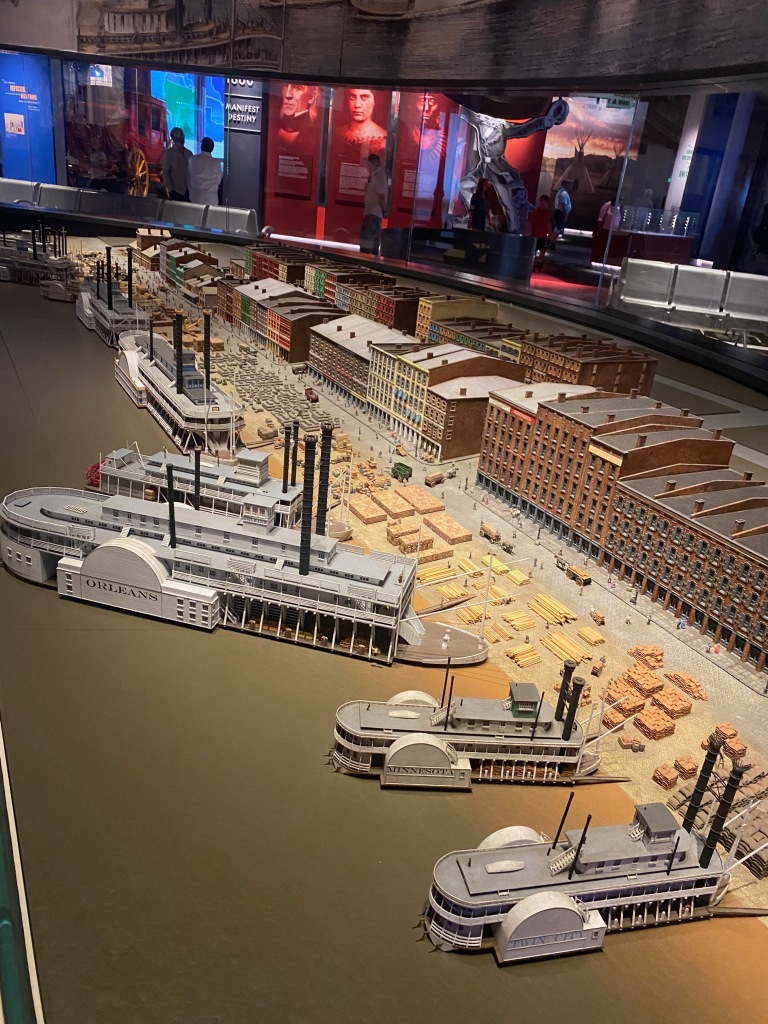




A friend of ours out east who hails from Kansas recommended we stop along the way at the Flint Hills Discovery Center in Manhattan, Kansas. The exhibits there opened my eyes to a region of the country that I was totally ignorant of. The Flint Hills run north and south through the eastern part of the state. The shallow, rocky soil made the hills unsuitable for crop farming, so they have remained the largest and one the last areas of tall-grass prairie. We stopped at the center on a July day when the truck thermometer read 106 F, so we enjoyed the air conditioning along with the exhibits. As we made our way west from there, we stopped at the Buffalo Bill Cultural Center near Oakley to pay respects to the famous cowboy and then drove about 30 minutes south to admire the Monument Rocks.
On our way back through Kansas a few weeks later, we stopped at the Tallgrass Prairie National Preserve, also in the Flint Hills about 70 miles south of Manhattan. The preserve covers 11,000 acres of tall grass and supports about 100 reintroduced bison. We took a ranger-guided ride through the preserve, where we saw a herd of bison from a distance and one male as close up as the ranger allowed us. We also stopped overnight to stay with the parents of our Kansas friend at their farmhouse near Buhler. Soybeans, corn, and sorghum were the main crops growing in the fields in that part of Kansas. Buhler, population 1,325, reminded me a bit of my hometown of Sauk Centre, Minnesota, with its grain elevator and friendly downtown. We ate breakfast at the Mustard Seed Café, where locals were gathering to start the day. It brought back pleasant memories of visiting my aging parents in Sauk Centre, where I would occasionally join my dad and his circle of friends for coffee at the Main Street Café.
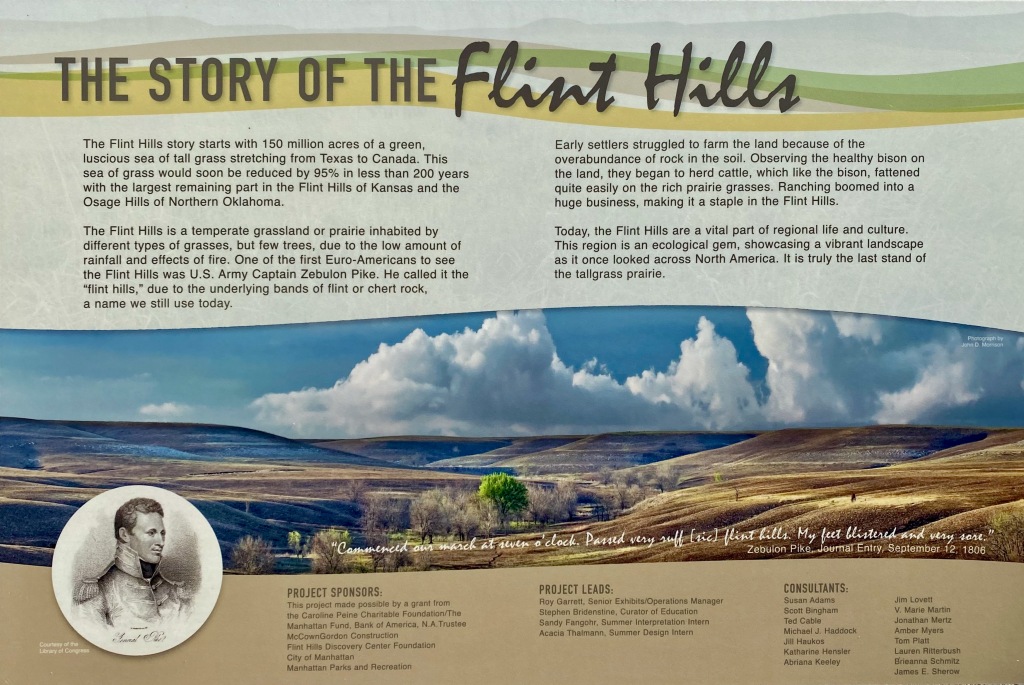
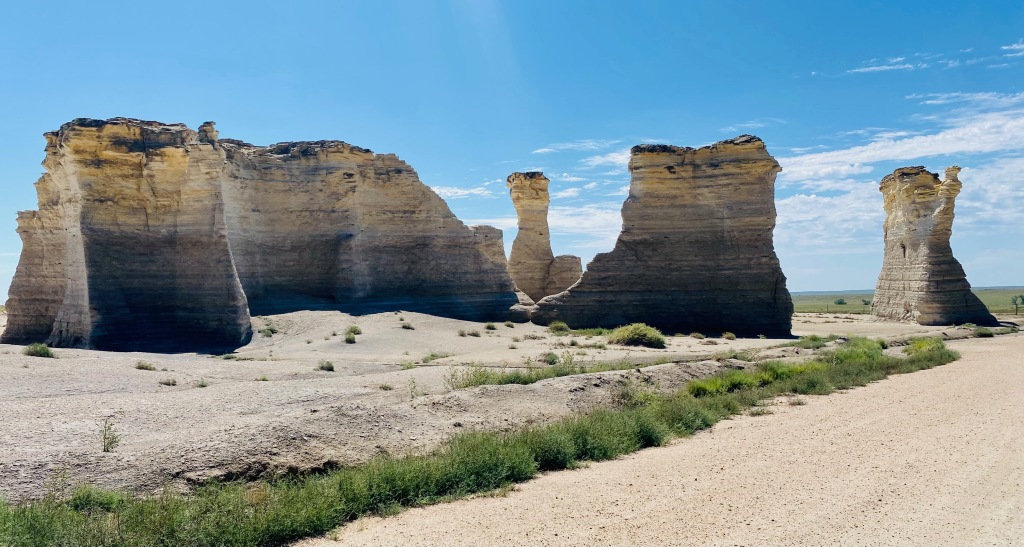
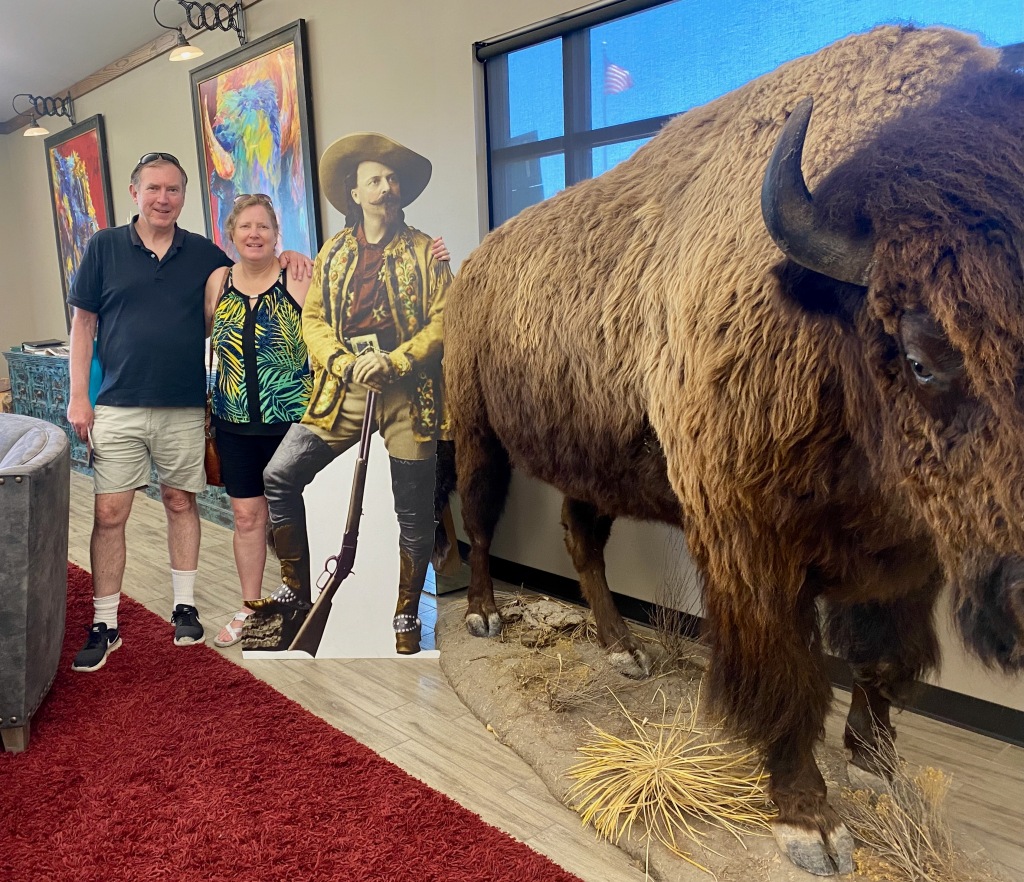


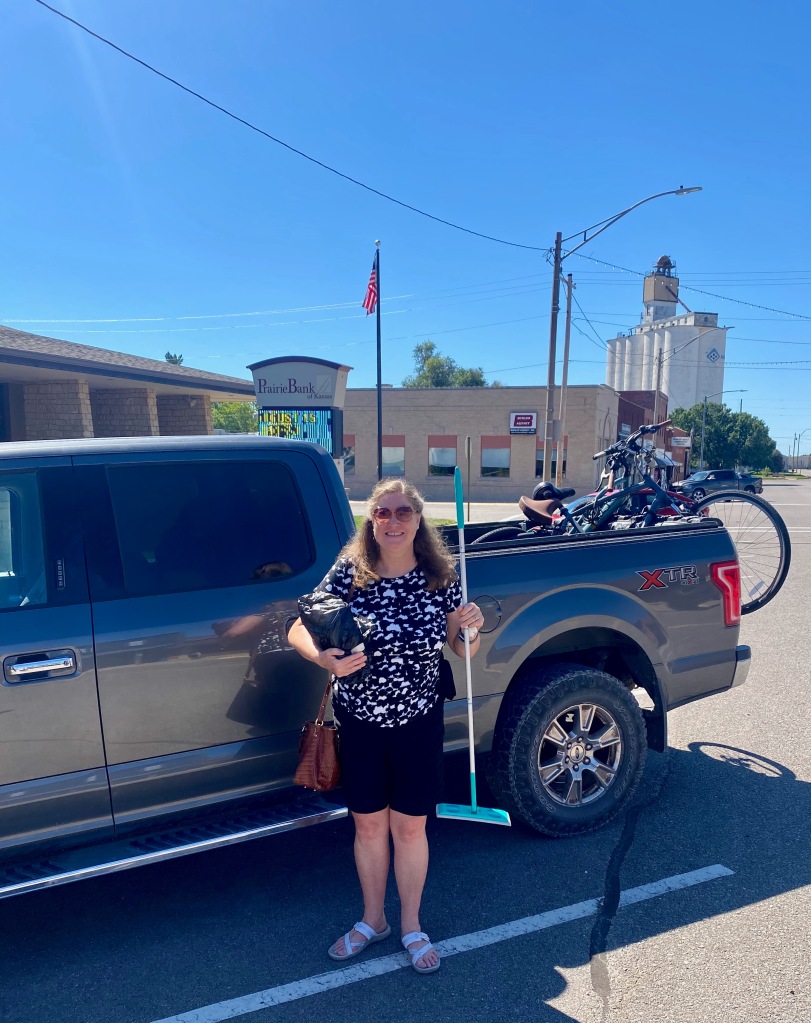


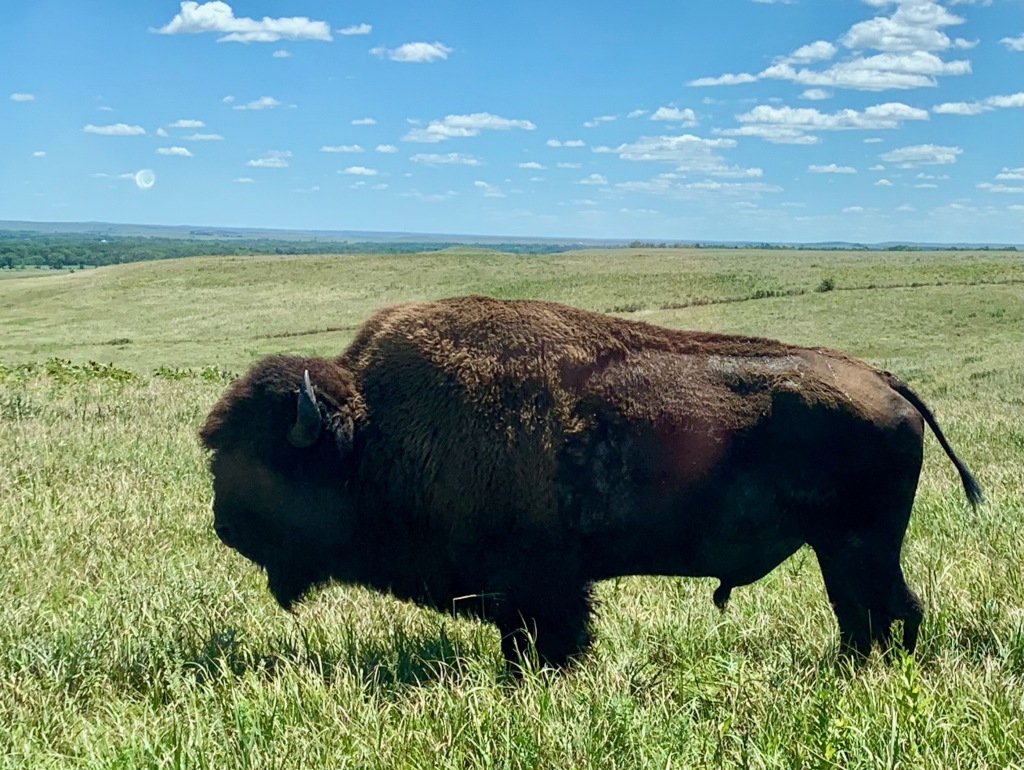
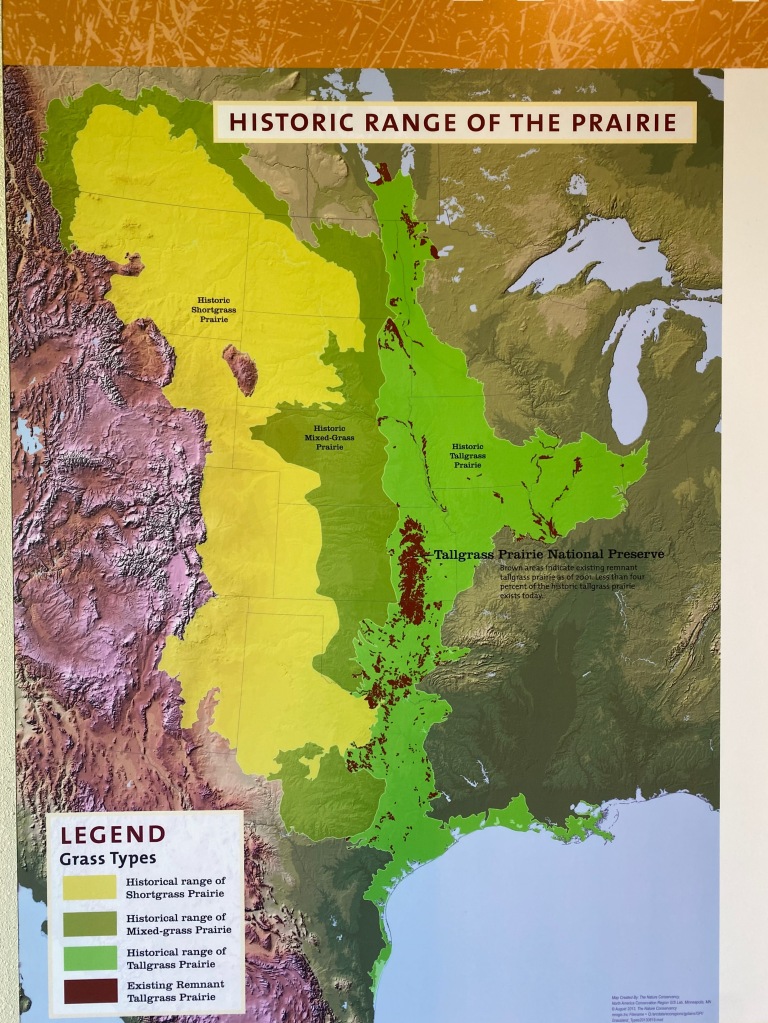
In the high plains of Colorado, as we were heading back east, we meandered along unpaved roads to the Sand Creek Massacre National Historic Site about 30 miles southeast of Kit Carson. On November 29, 1864, 700 volunteer troops attacked a peaceful encampment of Cheyenne and Arapaho Indians along Sand Creek. Hundreds were killed and some of the bodies mutilated. It was a sobering reminder of our nation’s checkered history in dealing with the native population. It was also an opportunity to walk across the high prairie with its big sky and no sounds other than the surrounding chorus of cicadas.
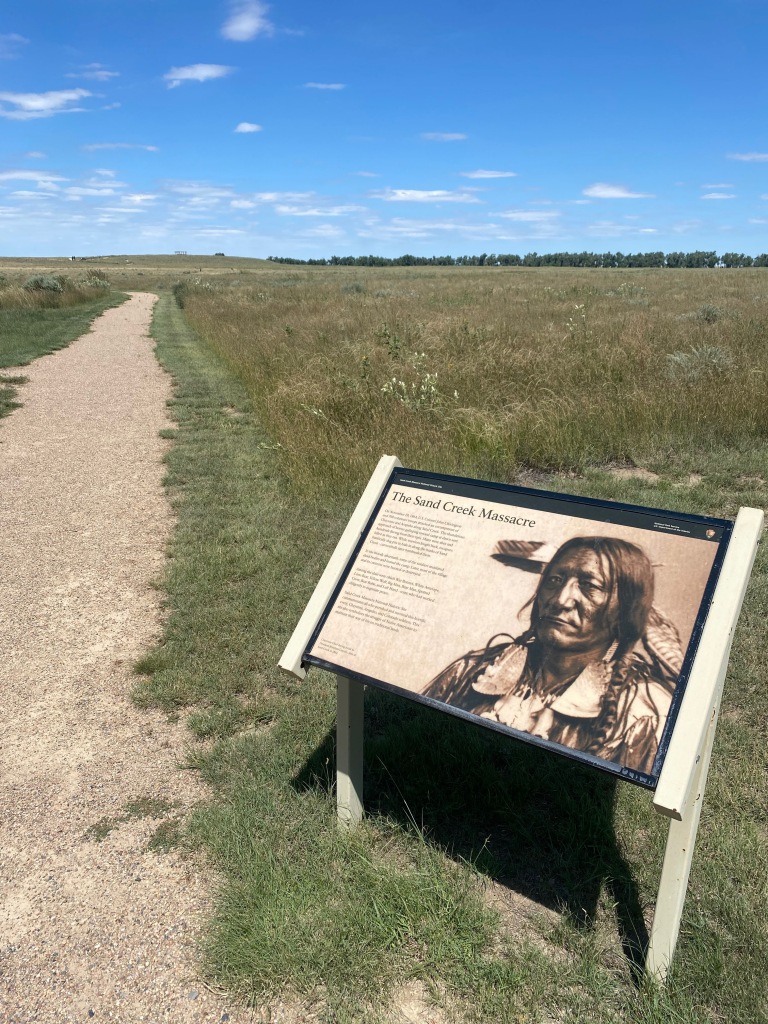

The final highlight of our drive was the Winston Churchill Museum in Fulton, Missouri. I’d seen the sign for it on our way out and made a mental note to stop there on the way back. Elizabeth and I agreed it was one of the best museums we’d ever visited. We spent nearly three hours viewing the exhibits of Churchill’s life and his famous visit to Fulton in March 1946. He was invited by Westminster College to give an address, and he chose that moment to warn the Western alliance about the “iron curtain” descending across the heart of Europe. It was considered a milestone in the Cold War with the Soviet Union that would last until the end of the 1980s. Eight sections of the Berlin Wall have been relocated outside the museum.
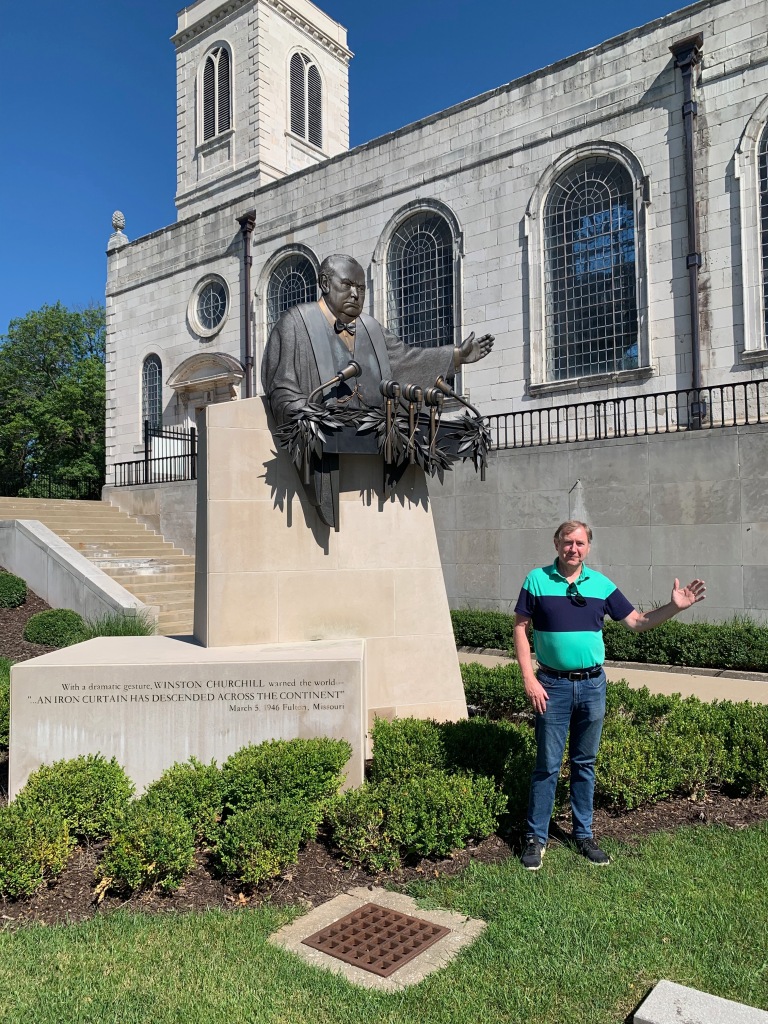
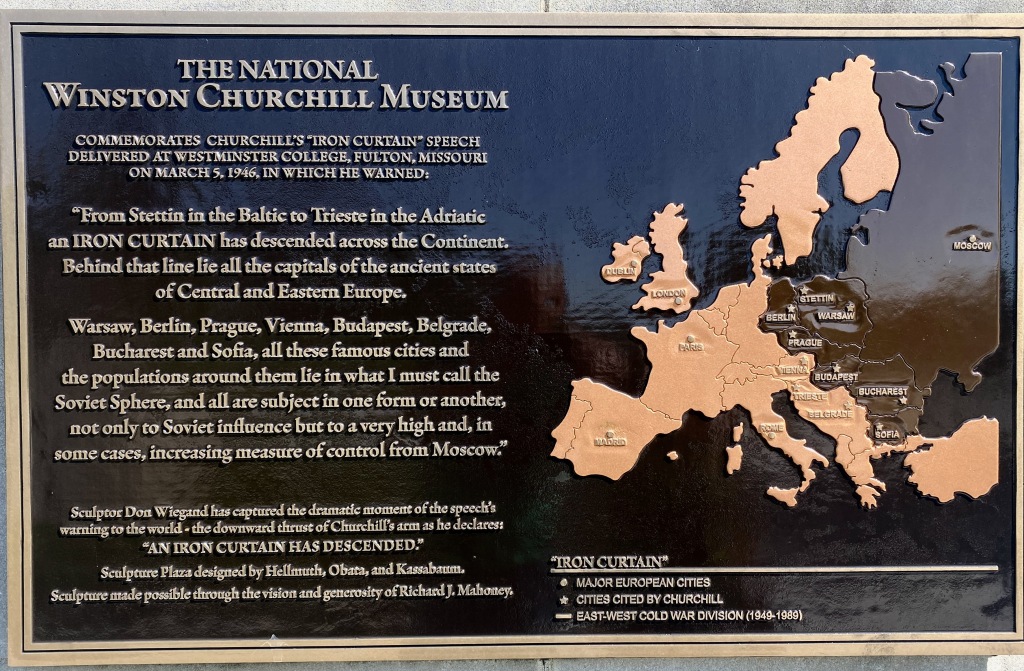
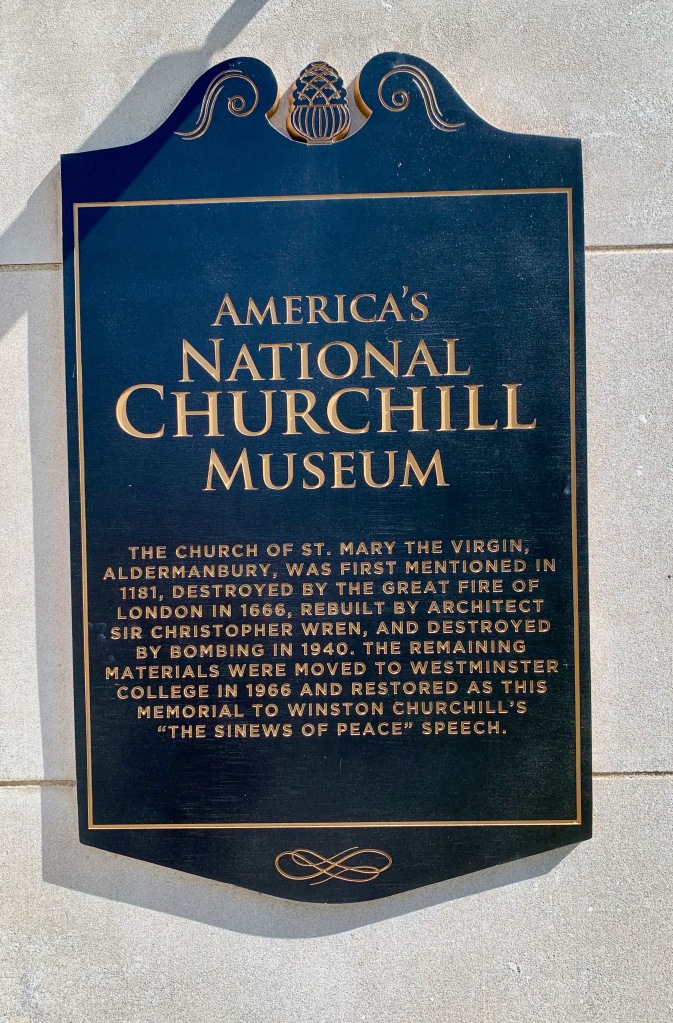

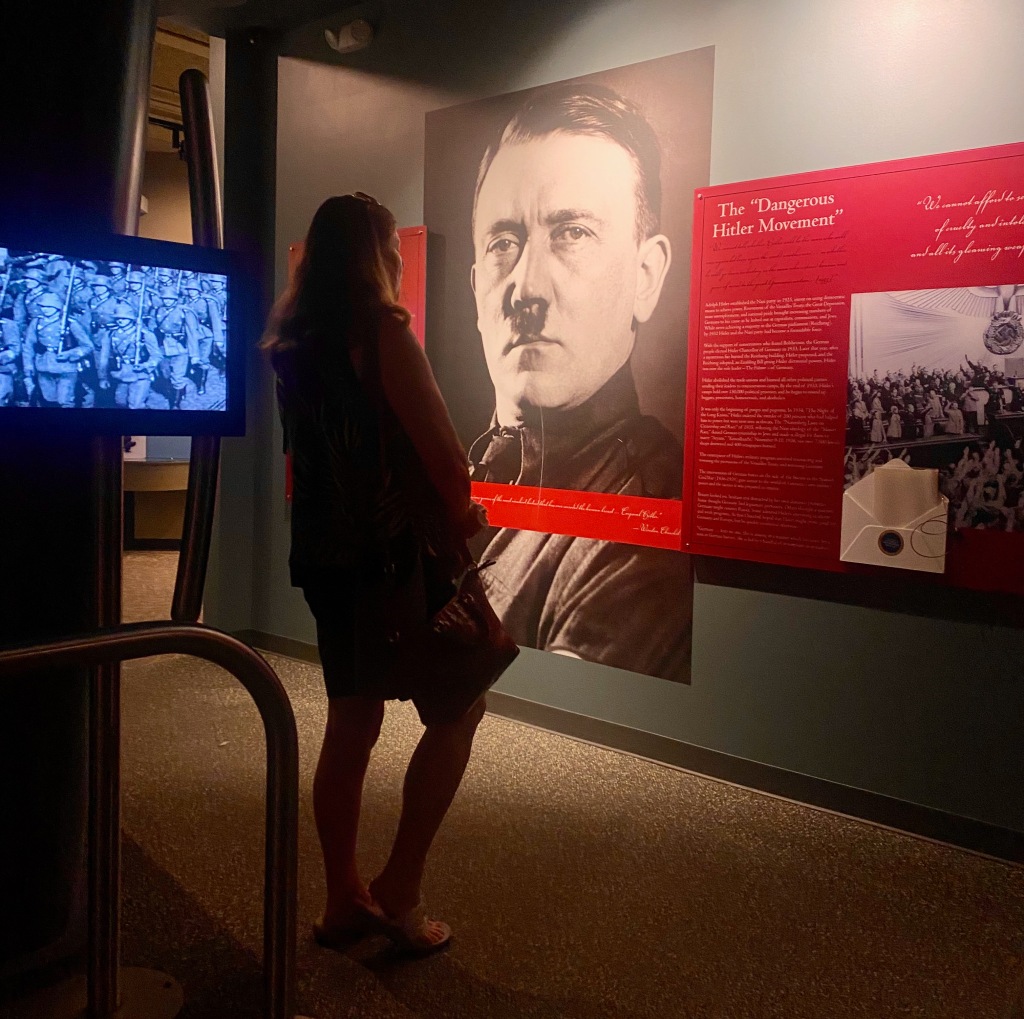
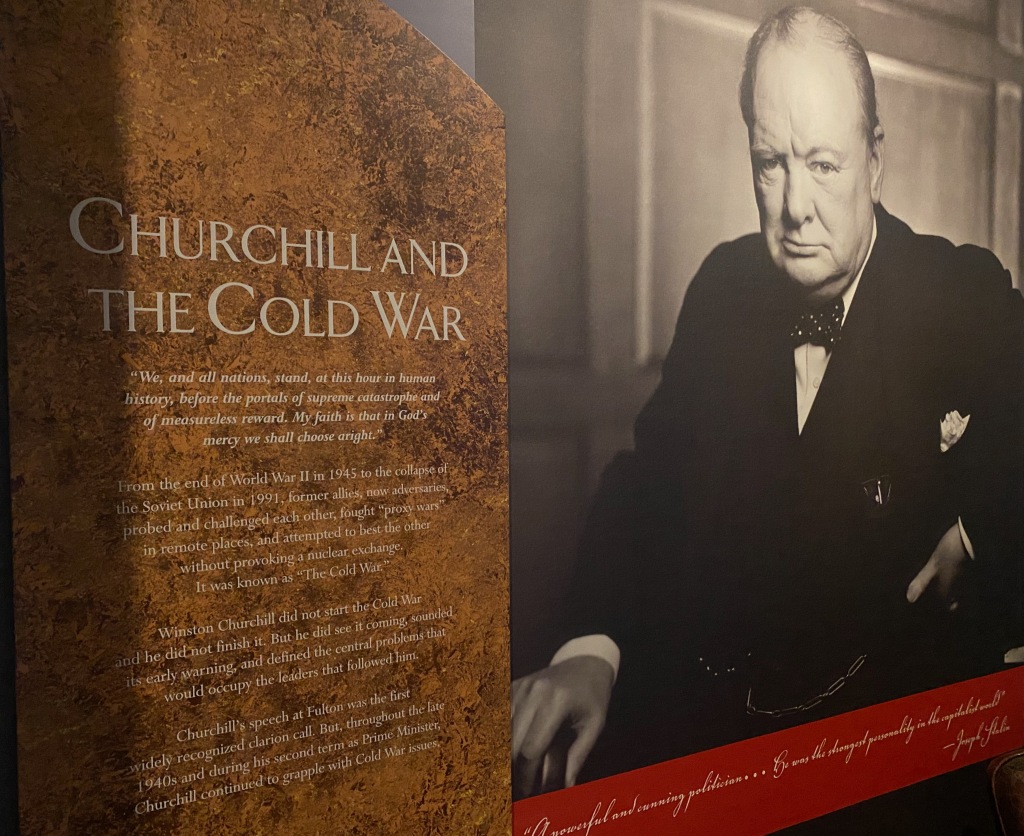
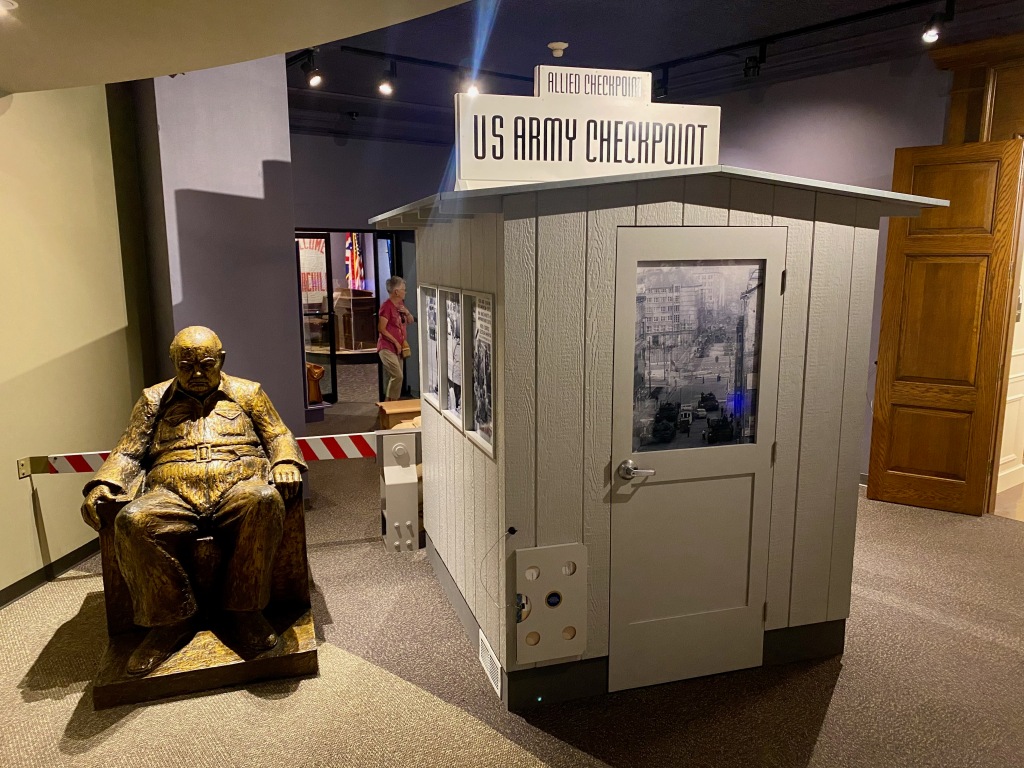

I hope these brief notes will kindle a bit of wanderlust to go not just to the big cities of coastal America but to visit the vast expanse in between. In just one trip we saw bison, sprawling prairie, small town charms, ripening fields, and three special places woven into our nation’s history.